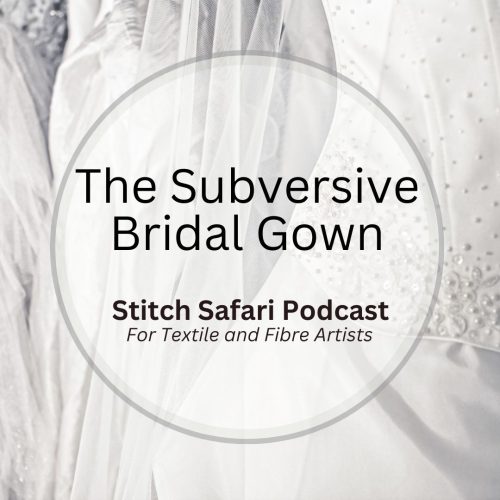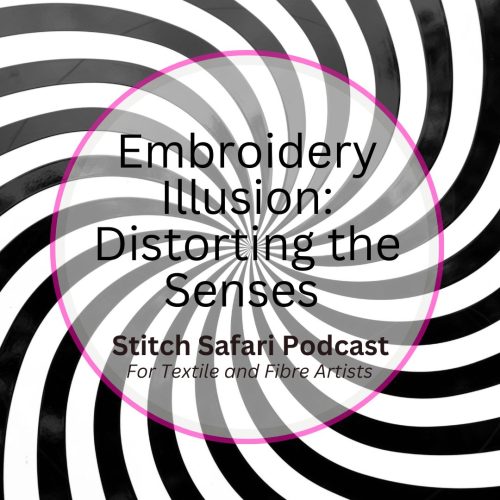Constructive feedback for your artwork is hard.
Do you self-critique or rely on the opinions of others?
One is necessary – the other, I’m not so sure about.
Our inner artist needs to tread wisely here because creating art is emotive and sensitive, so receiving feedback from others can be both difficult and confronting.
Are you strong enough to take challenging suggestions on board if you receive them?
In other words, are you willing to make a change?
Looking for constructive feedback may work for some, but I believe this is an area of our art practice where we need to exercise our own judgements and analysis – we need to learn to assess, evaluate and consider the directions we take – and to understand how to set things right when things go horribly wrong.
And of course, things will go wrong – that’s a given.
It takes strength, discipline and courage to be an artist and to learn to trust our inner instincts to assess our work.
Some may have a defined rationale or set of guidelines for critiquing their work – for others, it may be purely instinctual – but at the end of the day, it’s the results that matter – and I believe we should learn to make decisions based on those observations to help move our work forward.
It will strengthen us as artists by improving and educating us to rely upon our self-belief – a very intangible and sensitive area and as a result learn more about ourselves and the outcomes we’re forever chasing.
Stitch Safari listeners – agree with me or not on this one, this is an episode to listen to simply to understand the value of learning to critique our own artwork – of making judgements and decisions based on our style and values that will affect outcomes and exercise an area of our artistic oeuvre that’s not often spoken about – self-reliance, but if that doesn’t work for you, are you game enough to reach out and apply the opinions of others?
And do you trust them?
That’s the big question.
Now I know a number of people who swear by asking their friends to evaluate and offer opinions on their work.
Not me.
And here’s why.
They’re… simply… not… me – I’ve learned through experience not to listen to someone else’s opinion, based on a whole range of differing values, experiences, knowledge and abilities.
For me, it just doesn’t add up.
How many friends do you ask? Which ones do you listen to?
My one and only experience seeking an outside opinion taught me a lot – about myself and learning to trust my own instincts. At the end of the day, everything is my decision, so it taught me to lean on myself and trust in my own instincts.
However, asking for a constructive critique from a professional whose knowledge and experience will be called upon is a slightly different matter.
Have you ever received constructive feedback on your work?
It can be challenging, to say the least.
Ask 10 people for feedback and my bet is you’ll get 10 different responses.
Is it subjective or objective? Do you even know?
Far better, in my opinion, to teach yourself to critique your own work and learn to trust in your own abilities and sensitivities – in other words, become more self-reliant.
But, if you’re set on asking others for feedback, tread warily – everyone will offer an opinion – and remember, not all feedback is useful or valuable.
It can be damaging.
Years ago now I attended Judging Masterclasses and Judging education workshops – and they really opened my eyes to the complexity of learning not only how to judge work against each other within set parameters, but just as importantly, how to give constructive feedback.
It’s a world of words.
There are words and phrases that should be used and words and phrases that should be avoided. Totally.
The job here is to encourage, at the same time building better outcomes of design, technique and finishing while bolstering confidence.
And it’s important to encourage – using knowledge and experience to support up-and-coming artists to look at the large and small specifics of their work to lift them to a higher level – after all, we want to see more of their work, not discourage or demean what they do so their confidence goes out the window.
We need to support and nurture those coming through to help promote even further creativity and innovation.
And never, ever should constructive feedback become personal – this is about the work alone.
So if this is the path you wish to take, here are some tips I’d be looking out for:
- What experience does the person have in the area you work in?
- Are they highly regarded and have they exhibited in juried and judged exhibitions?
- Do they write and have they been published?
- Are they known for offering constructive feedback and exhibition judging?
- What exactly is it you want or need from this feedback?
- Why is this feedback valuable to you? And
- Are you willing to enact and apply their feedback?
You’ll be tapping into their knowledge, experience and insights garnered over years of study, making and analysing other people’s work – so you may be asked to pay depending on whom you approach.
I’ve received feedback from juried and judged exhibitions – some I could relate to and some I just couldn’t fathom at all, but I do realise that judging can be very much a time-managed process and scribing responses quickly, is not at all easy.
Now constructive criticism can be a growing and learning experience – for some, but not for all – especially if you’re not open to receiving negative feedback, so ask yourself ‘Will this experience help me get to where I’m going? Does it support my style and unique voice? Will it activate growth? And Am I willing to change?’
The thing you can’t do is take constructive criticism personally, which is why I suggest treading very warily – you do not need to deal with any form of negativity surrounding your work or your processes if you are at all sensitive.
So how can you teach yourself to critique your own work and what are the things you should be looking out for?
Here are some simple guidelines:
- Ask if the work has a ‘wow’ factor and expresses your concept.
- Look at your visual elements and ask yourself if they work.
- Does the title reflect the concept?
- Is the work unified?
- Look at the compositional components – do they make use of and offer contrasts of colour, value, shape, size, and texture?
- Is the design balanced and harmonious?
- Do the materials and techniques used reflect the theme adequately and appropriately? This is hugely important in embroidery and textile art.
And to be able to ask these questions of yourself and your work you need to stand back and look at the work in its entirety – so if it’s a large work hang it if possible or lay it on the floor – somewhere you can walk past it and see it out of the corner of your eye – it’s those little flashes that can inform errors or jarring elements.
Look at it from different angles and perspectives – even reflected in a mirror.
Take a photo of the artwork, then study it on your computer.
Assess whether you’ve worked to your strengths and minimised those weaknesses.
And here again, this is a learning process for ourselves as artists – just to be able to acknowledge those strengths and weaknesses is a huge step forward in my opinion.
If you see areas of weakness, fix them – teach yourself how, this is your work after all, but eventually, there will come a point when you will need to ask yourself ‘Am I done?’
Take as long as you need to fully assess the work – it may take days or even weeks.
Now I think the big takeaway from learning to assess and self-critique is that you will get a firmer sense of your progress as an artist – you’re not relying on other opinions – this is about gaining confidence and self-belief so you can move forward within your work, becoming more articulate about what you do and why.
So how do you assess your own work?
I keep saying this:
‘Look back to move forward’.
Revisit old work, old sketchbooks and old design work – you may be pleasantly surprised to see just how strong and powerful it is.
What you should be able to notice is your development and progression over time, but you need to be able to assess and articulate that yourself.
Look at the elements you gravitate towards. Things like:
- Frequently used colours
- Value – do you make use of it correctly?
- Recurring lines and shapes
- Successful pairing of technique and materials with your design
- Easy to understand rendition of your concept within the design
So, you have choices, to self-critique, ask a friend or friends or rely on guidance from respected practitioners in your field?
You know what’s most important?
Love what you do and do what you love, one of my mentors Karma Victoria Baines once said that to me and I still look at that as my mantra.
Be warned and be careful you don’t expose yourself and your creativity to undue stress and a level of criticism you find hard to accept.
Rather, why not promote and hone the skills you need to self-critique and in doing so, become a more complete and well-rounded artist in the process?
The main thing is to make sure you keep moving forward.
It’s up to you how you do it.





